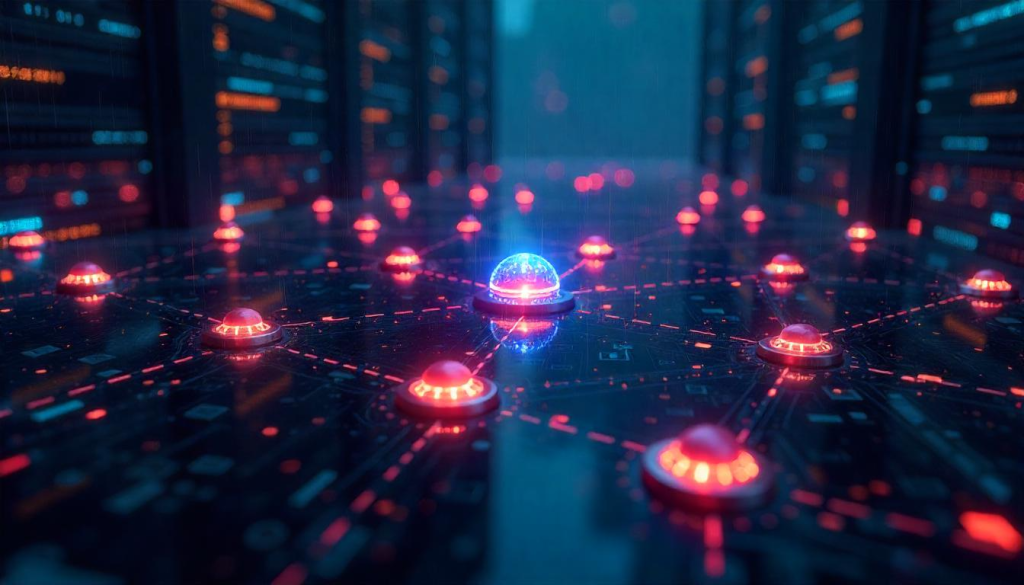Artificial Intelligence (AI) has come a long way. What started as simple, rule-based programs has now grown into complex systems capable of remarkable feats. One of the most fascinating parts of this journey is the evolution of AI agents — autonomous programs designed to perceive, learn, and act in their environments.

Today, we’ll explore how AI agents have evolved from basic chatbots you might have chatted with online to sophisticated multi-agent systems that cooperate to solve big problems. Let’s dive in!
What is an AI Agent?
Before jumping into history, let’s clear up what we mean by an AI agent. Simply put, an AI agent is a software program that can independently perform tasks by perceiving its environment and making decisions based on what it “knows.”
Imagine a virtual assistant on your phone that answers your questions — that’s an AI agent. Or a system that monitors stock markets and makes trades — also an AI agent.
The Early Days: Rule-Based Chatbots
The journey began decades ago with rule-based chatbots. These were simple programs that followed pre-set scripts or decision trees.
ELIZA: The First Chatbot
In the 1960s, Joseph Weizenbaum created ELIZA, one of the first chatbots. ELIZA mimicked a psychotherapist by responding to typed inputs with pattern matching and substitution rules. Although ELIZA didn’t understand language, it surprised many people with its seemingly intelligent conversation.
These early chatbots worked well for limited tasks, but they lacked true understanding or learning ability. They were rigid — if you strayed from expected inputs, they would fail to respond meaningfully.
The Rise of Machine Learning Agents
As computer science advanced, researchers introduced machine learning (ML) techniques, allowing agents to learn from data instead of relying solely on hard-coded rules.
From Rules to Learning
Instead of manually programming every possible user input, ML agents trained on large datasets to recognize patterns. This shift led to smarter chatbots and assistants like Apple’s Siri and Amazon Alexa.
These agents could understand speech, recognize context, and provide more natural responses. For example, when you ask Alexa about the weather, it parses your question, fetches data, and replies conversationally — all thanks to ML.
Toward Autonomy: Reinforcement Learning Agents
Machine learning also introduced reinforcement learning (RL) — a method where agents learn by trial and error, receiving rewards or penalties based on their actions.
RL in Game Playing and Robotics
RL has enabled AI agents to master complex games like Chess, Go, and even real-time strategy games by learning optimal strategies through experience.
In robotics, RL agents can learn to navigate environments, manipulate objects, or even perform delicate tasks, like folding clothes, with minimal human guidance.
The Emergence of Multi-Agent Systems (MAS)
While single AI agents became powerful, researchers realized that many real-world problems require multiple agents working together, much like teams of humans.
What are Multi-Agent Systems?
A Multi-Agent System is a collection of autonomous agents that interact, cooperate, compete, or negotiate to achieve individual or common goals.
For example, consider a fleet of autonomous drones surveying a disaster site. Each drone is an agent sharing information, dividing tasks, and adjusting to changes in real-time.
Why Multi-Agent Systems Matter
MAS can solve problems too complex for a single agent. They bring several benefits:
-
Scalability: Tasks can be split among agents to handle larger problems.
-
Robustness: If one agent fails, others can continue working.
-
Flexibility: Agents can dynamically adapt roles or form coalitions.
-
Emergent Behavior: Complex patterns and solutions arise from simple agent interactions.
Real-World Applications of Multi-Agent Systems
Today, MAS are being applied in diverse areas:
-
Smart Grids: Agents manage electricity distribution efficiently by balancing supply and demand.
-
Traffic Management: Autonomous vehicles communicate to optimize flow and avoid congestion.
-
E-commerce: Multiple agents handle price negotiation, inventory management, and customer service.
-
Healthcare: Agents collaborate to monitor patient data, schedule treatments, and support diagnosis.
Challenges in Multi-Agent Systems
Despite their potential, MAS also bring challenges:
-
Coordination Complexity: Ensuring agents work together without conflicts is tricky.
-
Communication Overhead: Excessive information sharing can slow down the system.
-
Security: Agents interacting over networks are vulnerable to attacks.
-
Trust: Deciding how much to trust agents, especially when incentives differ.
Researchers continue to develop frameworks and protocols to address these issues.
The Future: Combining AI Agents with Advanced Technologies
The future looks exciting as AI agents integrate with cutting-edge tech like:
-
Natural Language Processing (NLP): Making agent communication more human-like.
-
Blockchain: Securing agent interactions with decentralized trust.
-
Edge Computing: Allowing agents to process data locally for faster response.
-
Explainable AI: Making agent decisions transparent and understandable.
Imagine a world where your home’s AI agents manage everything — from groceries to security — while seamlessly interacting with city-wide agent networks to optimize resources and energy use.
Wrapping Up: A Journey of Growth and Promise
From ELIZA’s scripted replies to fleets of cooperating drones, AI agents have evolved remarkably. This evolution reflects our growing understanding of intelligence, autonomy, and collaboration.
AI agents are no longer isolated tools; they are becoming dynamic, interactive entities capable of working together to solve problems we once thought impossible.
As these systems become more sophisticated and widespread, they promise to change how we live, work, and connect — making our world smarter, safer, and more responsive.
Final Thought
If you’re curious about AI agents, whether for tech careers or just understanding the future, keep an eye on multi-agent systems and the innovations they inspire. This is a fascinating area where computer science meets real-world impact — and the best is yet to come.